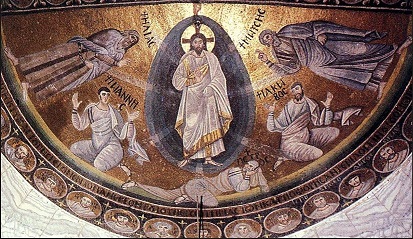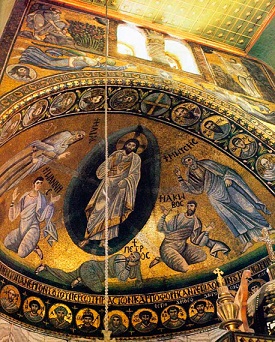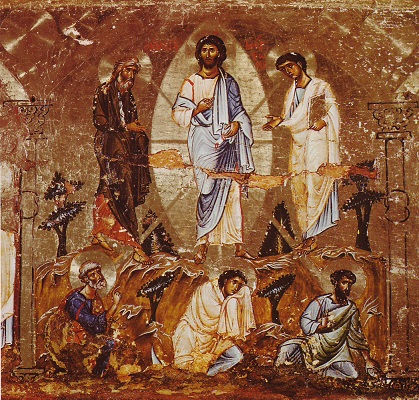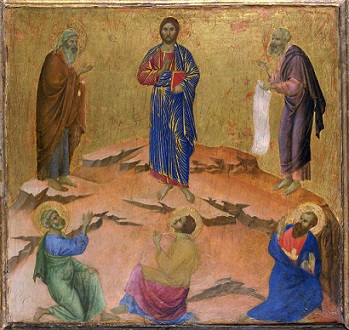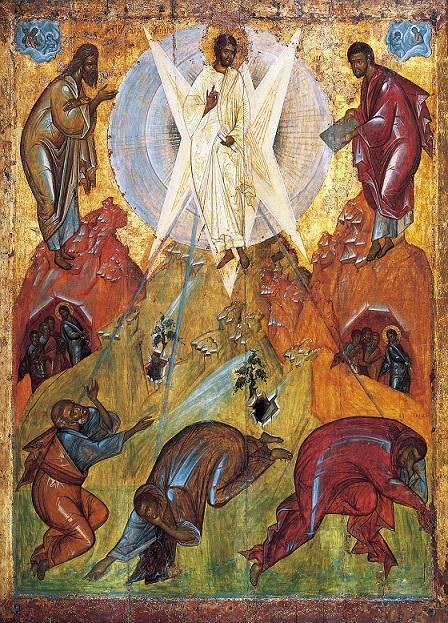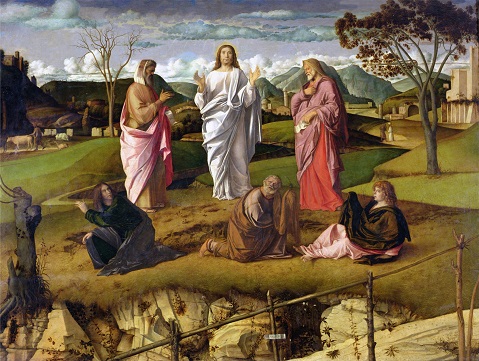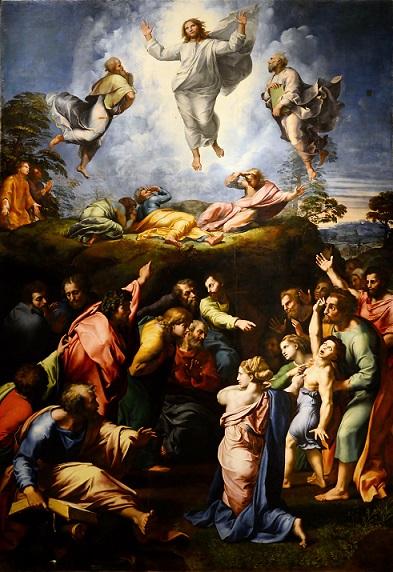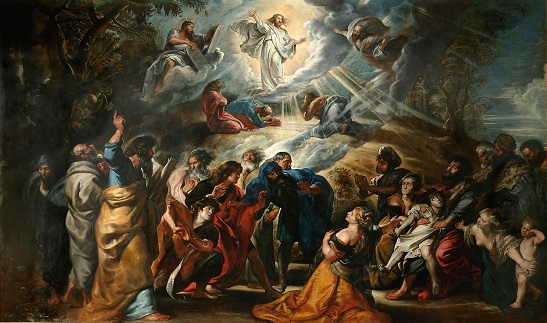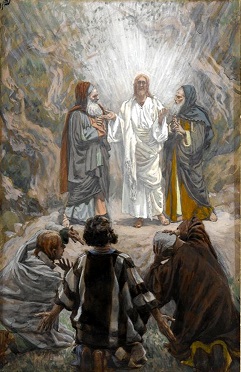ART: Many artists have depicted the Transfiguration of Jesus. Below are images of some of those works of art. If you click a picture, you will see a much larger version. For some of the pictures, you can click on the larger version and see an even LARGER version. The first is a mosaic. It was made in about 565, a little more than 500 years after Jesus was crucified. A mosaic is a picture that is made by putting little pieces of tile together to make the picture. This is in the ceiling of the Monastery of Saint Catherine, at Mount Sinai, in Egypt. It is in a part of the ceiling that is curved, like a dome. The artist represented Jesus as the light of the world: Here is a second image of that mosaic. You can better see the location of the mosaic in the ceiling:
The painting is called "The Transfiguration." It is part of the large piece of art called "Maestą." We have looked at other paintings that the artist Duccio made for the Maestą. Together, the paintings told the story of Jesus' life. Last week, we looked at this artist's painting about the Temptation of Christ, when Jesus was in the desert for 40 days and the devil tried to tempt Jesus. Earlier, we looked at this artist's painting that shows when Jesus called Andrew and his brother Simon Peter to be Apostles, to be fishers of men. All three paintings are in the bottom row of paintings on the backside of the Maestą. The painting of the Transfiguration is the 2nd from the right, below: The Maestą was made to be put on an altar inside a huge church building in Italy. The piece of art had two sides, and it had different paintings on each side. (Side 1.) (Side 2.) The art piece was inside the church for about 450 years. Then, it was cut into pieces, leaving many individual paintings, and the individual paintings are now all over world. The Transfiguration painting is in an art gallery in London, England.
|
